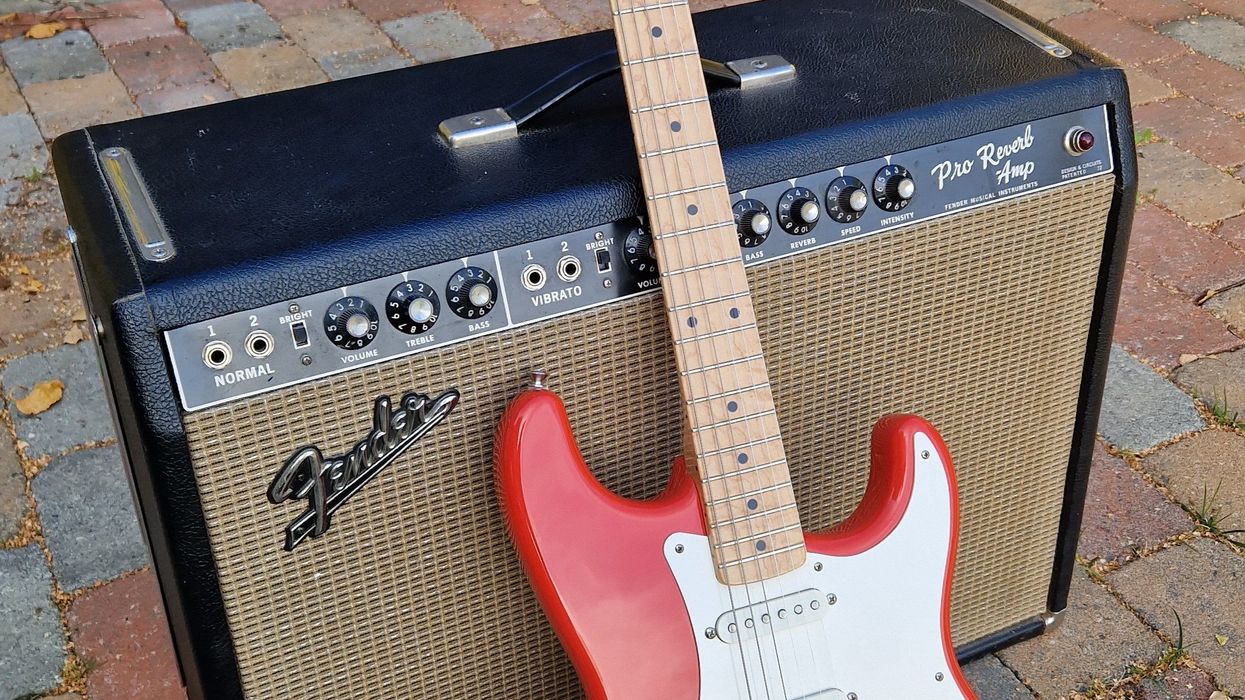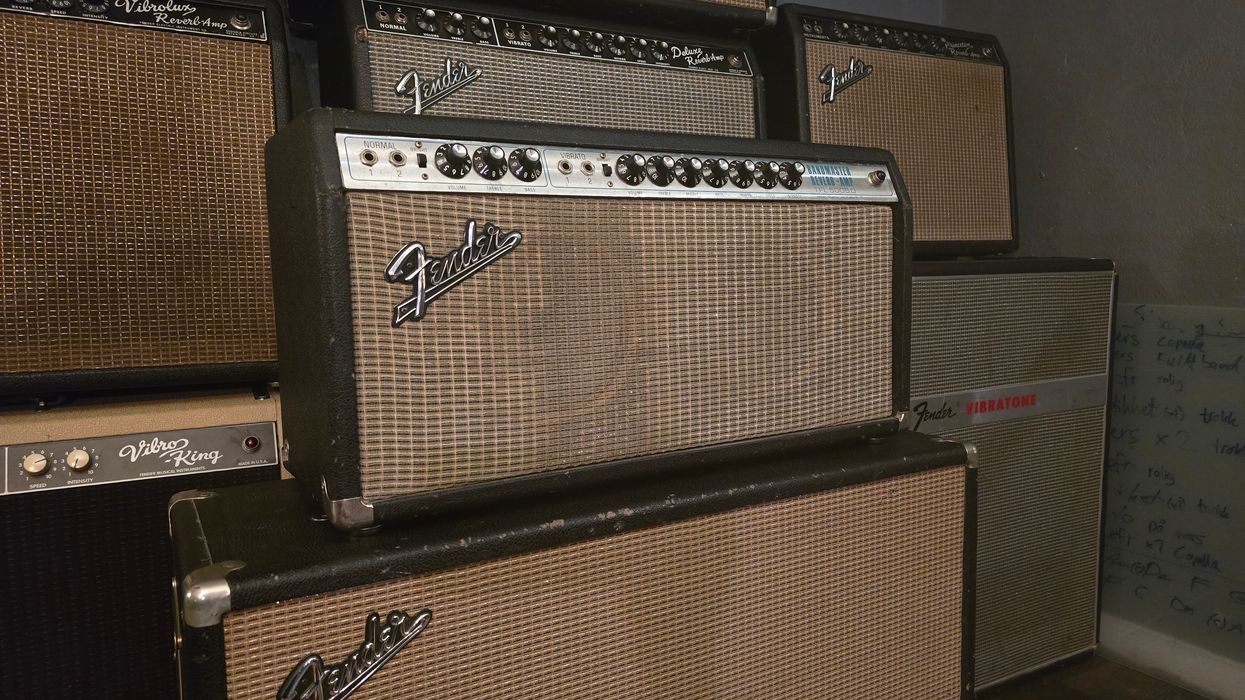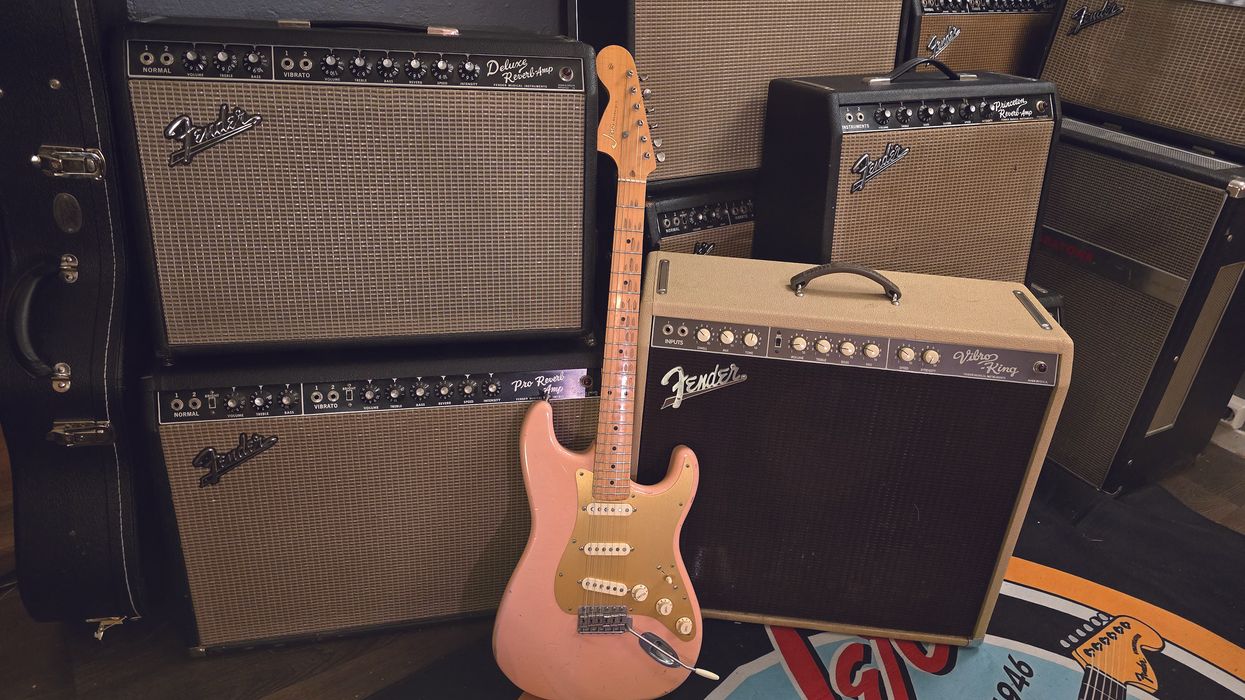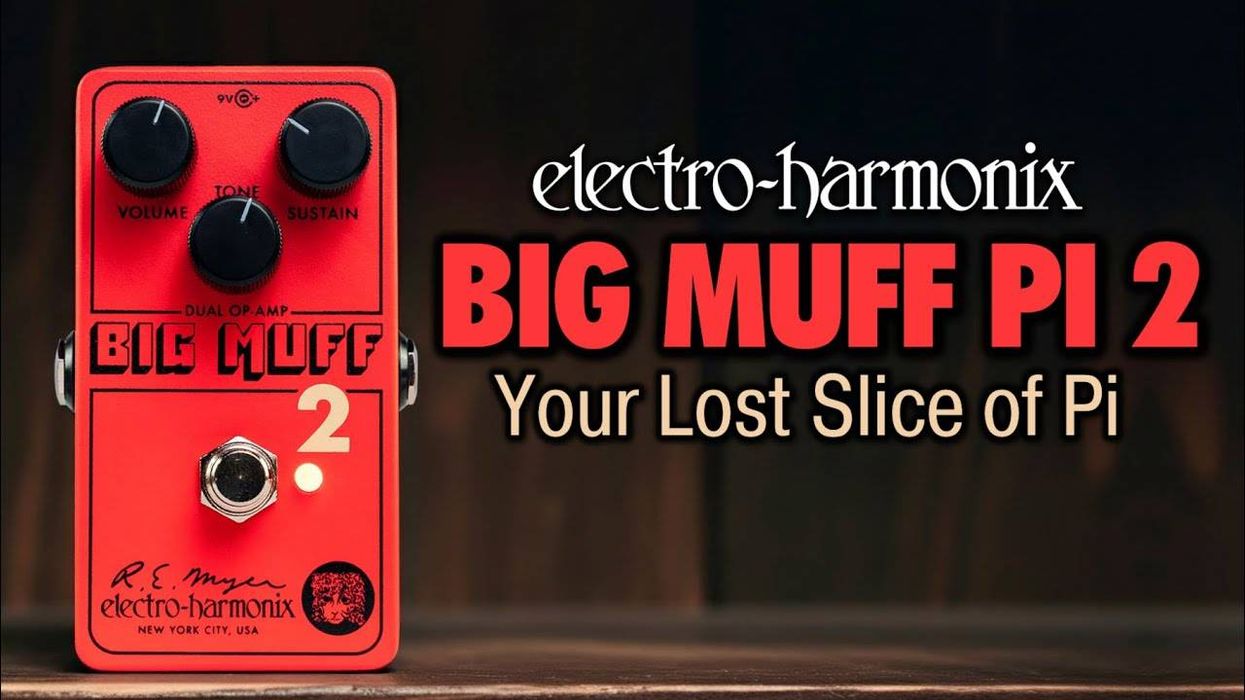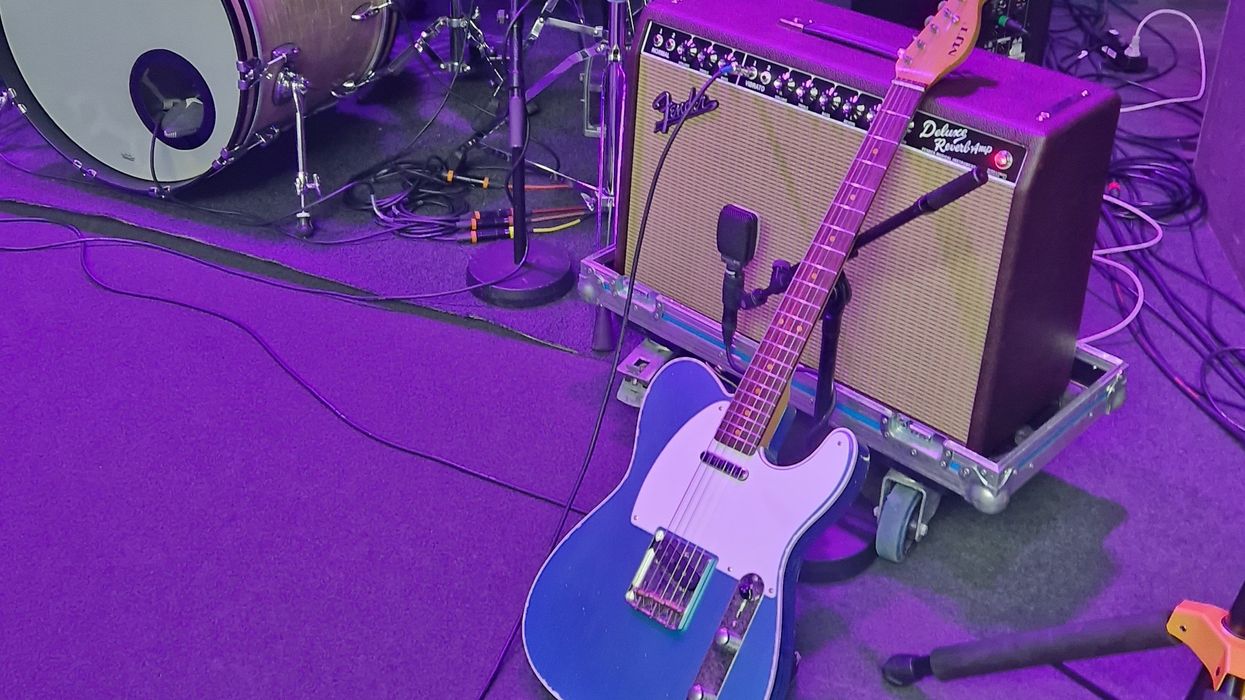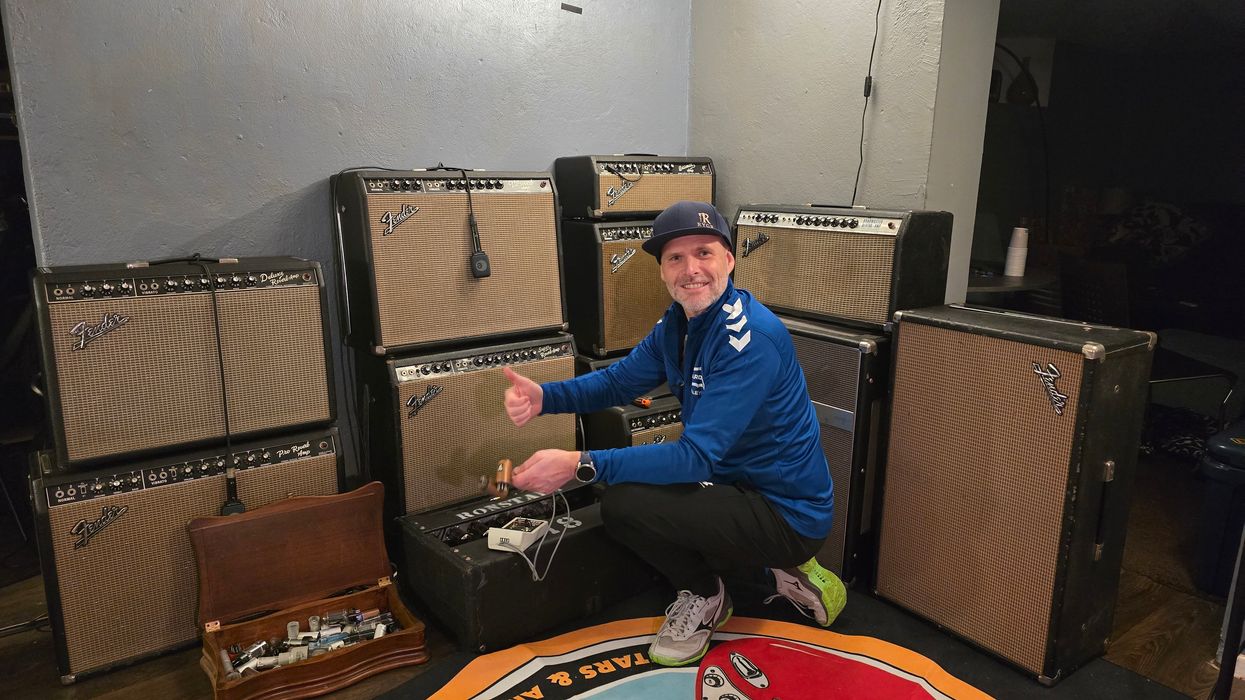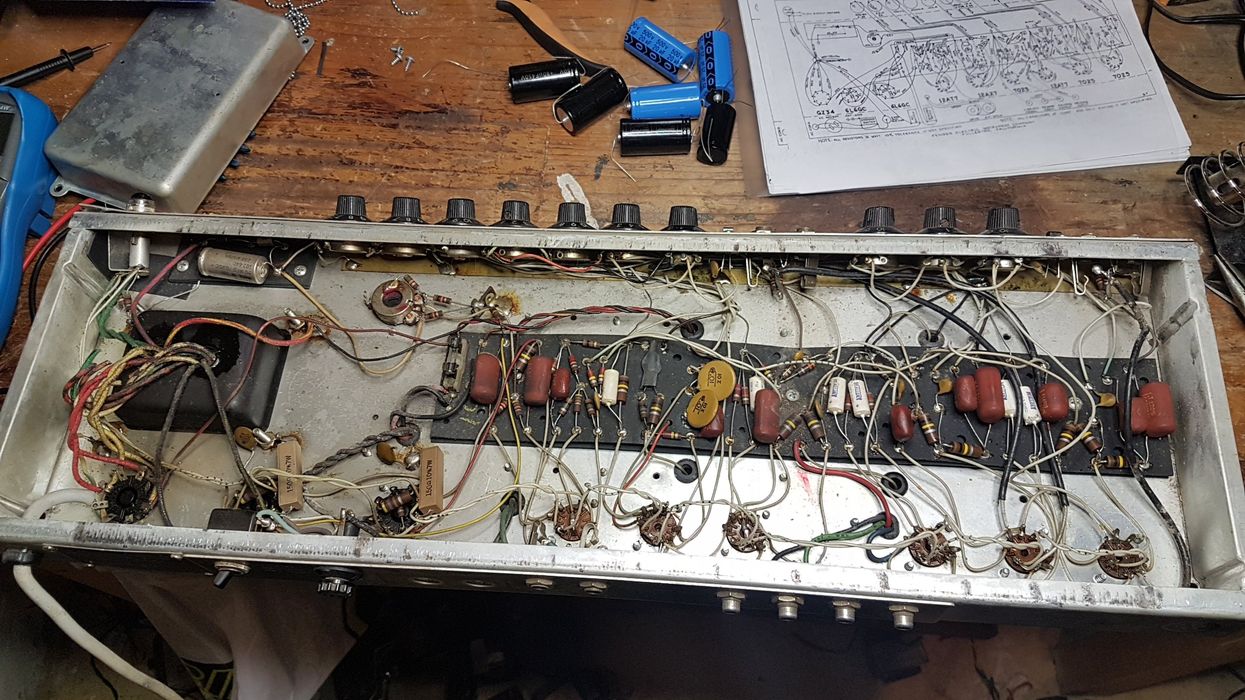The latest chapter of my quest for perfect sounds is a love story filled with surprises and valuable insights worth sharing about a fiesta red Stratocaster with a maple neck. Along the way, I’ll explain how I used it to dial in a timeless Mark Knopfler tone from old-school Fender amps.
My personal journey with this elusive guitar tone began at the age of 10, in 1985, when my mother, who was a music teacher, introduced me to Dire Straits’ Brothers in Arms album. Mark Knopfler’s melodic guitar and his signature Stratocaster and Les Paul sounds left a mark on my musical soul. However, I must confess that I'd never been particularly enamored with the looks of his fiesta red Strat. I have gravitated towards Fenders with rosewood necks and lighter body colors like vintage white, surf green, and shell pink.
It was in September of last year that everything changed. I found myself holding a pristine fiesta red Stratocaster in my hands, and a revelation occurred. The color, in real life, is far more nuanced than the intense and dark shades often depicted in magazine spreads or on screens. In the physical world, it’s a beautiful blend of pale red, carrot orange, and delicate pink undertones. It appears that cameras and screens simply cannot capture the true essence of this classic finish.
While browsing for guitars here in Norway, I stumbled upon a 1958 Fender Custom Shop Strat, crafted in 1997, which had been on sale for an extended period, causing its price to gradually decline. It seemed that the absence of the receipt, the certificate of authenticity (COA), and the “case candy,” coupled with the fiesta red finish’s apparent limited popularity, had contributed to the lowered price. I made the seller an offer of $2,090, which he graciously accepted. Today, it is hard to find any Custom Shop Stratocaster below $3,000 to $4,000. My purchase felt like a good deal.
The photos in the advertisement showcased the usual Fender Custom Shop badges and stamps on the headstock, neck plate, neck, and inside the body’s neck pocket. The neck bore a date stamp of February 18, 1997, and there were no telltale signs of other paint colors in the body’s neck pocket or the pickup cavity. With a minor setup, the guitar demonstrated impeccable playability and sustain reminiscent of a grand piano. I proudly and loudly played my newfound fiesta red for a week, eagerly looking forward to the next gig. The only tweak I considered was replacing the small vintage frets with 6105 stainless steel, enabling easier bending and shaking.
“Play from the heart, without overplaying, and you'll find yourself transported to the realm of ‘Sultans of Swing.’”
With my new Strat in hand, I once again set off in pursuit of the classic Knopfler sound. I gravitated towards amplifiers featuring light and low-powered 10" speakers known for their remarkable touch sensitivity. Think of the black-panel or early silver-panel Super Reverb or Vibrolux Reverb models with CTS alnico speakers, famously known for their pristine clean tones. Crank these amps’ volumes up to around 5 or 6, engage the bright switch, ditch your pick, and delicately pluck a set of light or medium strings using the combined bridge and middle pickup position. Play from the heart, without overplaying, and you'll find yourself transported to the realm of “Sultans of Swing.”
Things took an unexpected turn when I reached out to Fender to request a new COA. They responded quickly and asked for more close-up pictures of the wiring harness, pickups, and components. To my great surprise, they informed me that the serial number did not align with a fiesta red with a maple neck; instead, it corresponded to a ’60s flame maple top aged cherry sunburst, crafted in 1998. Even more disheartening was that the wiring, switches, and pots did not appear to be vintage-correct.
While I had heard rumors of discrepancies in Fender’s historical records, it was challenging to accept that my guitar could be a “partscaster” with mismatched components. Nonetheless, the absence of a COA significantly impacted the guitar’s secondhand value. What was I to do? As much as I enjoyed the instrument, the nagging feeling that something was wrong kept me awake at night. Ultimately, I contacted the seller and requested a refund. To my relief, he understood the situation and accepted the return. As a token of gratitude, I gifted him a bottle of Châteauneuf-du-Pape.
A lingering doubt remained: What if Fender’s records were incorrect? I may never have a definitive answer. And so, my quest for the perfect Knopfler fiesta red continues.


